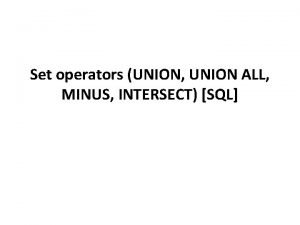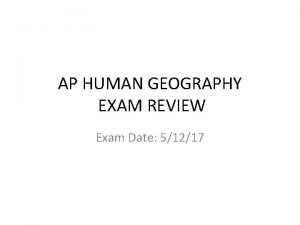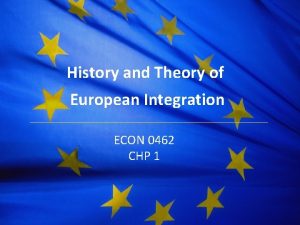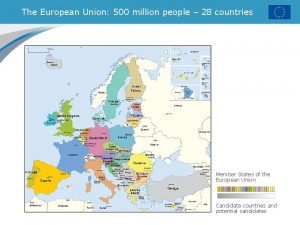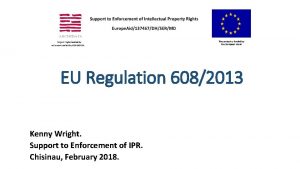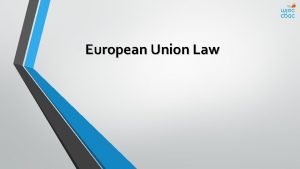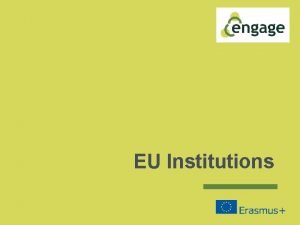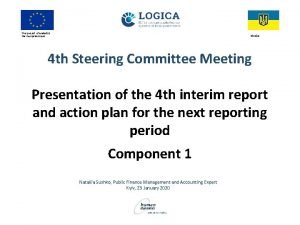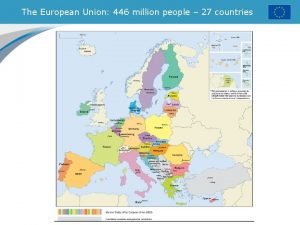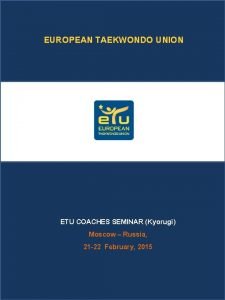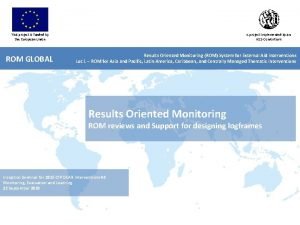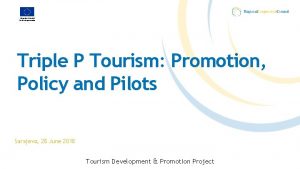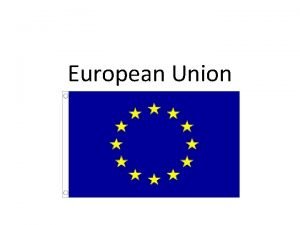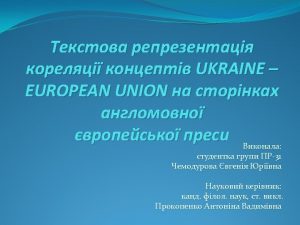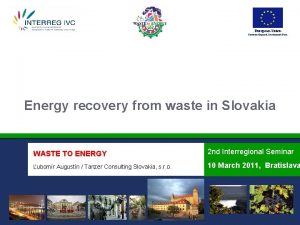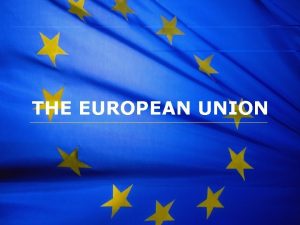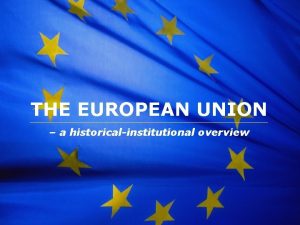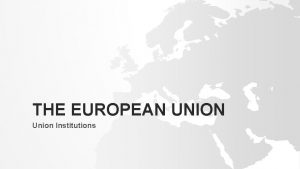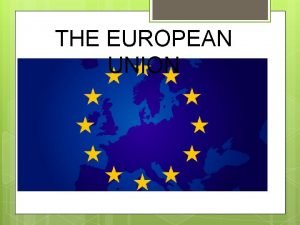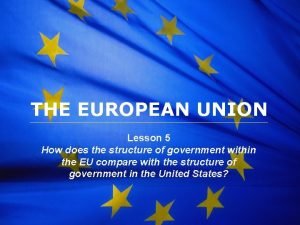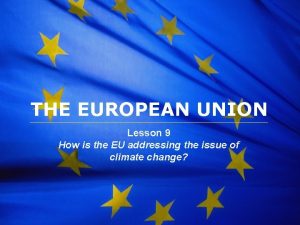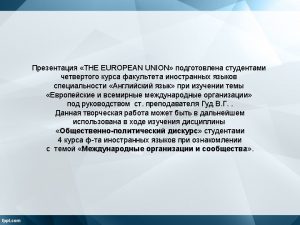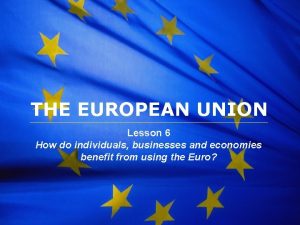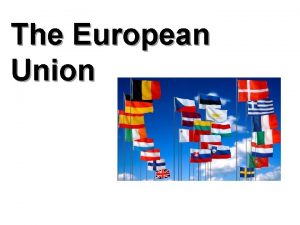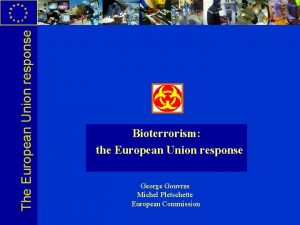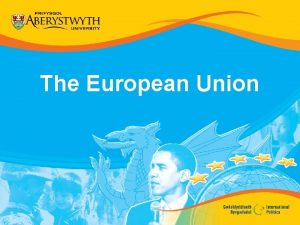The European Union The European Union The European






















- Slides: 22

The European Union!

The European Union! The European Union is the supranational organization binding the European states. New direction of cooperation after centuries of fights, including the World Wars Doesn’t replace nationalism; alters members’ policymakers’ practices substantially

A BRIEF HISTORY Revitalize Europe after World War II The economy was most crucial 1949 Council of Europe: little power, chance for national leader to actually meet 1950 supranational authority was formed to coordinate the coal and steel industries

1957 European Economic Community: established by the Treaty of Rome Informally was called the “Common Market” Made to eliminate all tariffs between European nations, and to create new ones that applied to all members

European Community (EC) 1965: Expanded beyond economics Major concern: unified approach to the peaceful use of atomic energy EC was limited by disagreements over the amount of power it should have, and many feared losing national sovereignty

European Community (EC) Integration boosted by collapse of Soviet Union in late 1980 s New democracies and the shift from communism to capitalism demanded guidance from a supranational regional power

European Union: 1991 Maastricht Treaty Authority over monetary policy, foreign affairs, national security, transportation, environment, justice and tourism 3 Pillars (Spheres of Authority)

Pillar 1. Trade and Other Economic Matters Single currency, the Euro, replaced national currencies Creation of the European Central Bank


2. Justice & Home Affairs Policy on asylum, border crossings, immigration, and judicial cooperation on crime/terrorism 3. Common Foreign & Security Policy Joint positions and actions, and common defense policy

MEMBERSHIP Currently 27 nations, with 3 pending Rapid integration has lead to many difficulties: Organizational issues Expansion brings in many former communist countries with weak economies Flood of labor? Strain the economy? Supporters think the common benefits will be more powerful.

Candidate nations must meet 3 key criteria: 1. have a stable & functioning democratic regime 2. market-oriented economy 3. willingness to accept all EU laws & regulations

THE E. U. IS ORGANIZED INTO 4 MAJOR BODIES. 1. The (European) Commission 1 member per state Bureaucracy of thousands of civil servants Each Commissioner is responsible for a particular area of policy, and heads the Directorate General The Commission is led by a President with an oath of allegiance to the whole EU Commission is to initiate and implement new programs Form a permanent executive that supervises the work of the EU, like a national cabinet

THE E. U. IS ORGANIZED INTO 4 MAJOR BODIES. 2. The Council of Ministers Demonstrates the continue power of the state Consists of foreign ministers, finance ministers, President of France and all Prime Ministers Frequent meetings Heads of state meet as the European Council every 6 months Council of Ministers is central to the EU’s legislative process passes the Commission’s laws Each country gets a specific number of votes in proportion to its share of the population

THE E. U. IS ORGANIZED INTO 4 MAJOR BODIES. 3. European Parliament Little legislative power Since 1979 its members (MEP’s) are directly elected by their respective peoples, and have a little independence from their national governments Propose amendments to legislate and reject Council proposals Council can override rejections with a unanimous vote EU citizens vote directly for representatives to Parliament every 5 years Apportionment isn’t based on population Smaller states have disproportionately greater representation

THE E. U. IS ORGANIZED INTO 4 MAJOR BODIES. 4. European Court of Justice Supreme court; power of judicial review May limit national sovereignty more powerful than any national courts Broad jurisdiction One judge per state

POLICY-MAKING POWER 3 areas of Active Policy 1. Create & maintain a single internal market Remove most tariffs & other barriers between members 2. Union of Monetary policy Euro! European Monetary Union and its Central Bank have the power to set basic interest rates and other fiscal policies Britain and Sweden refused the Euro

POLICY-MAKING POWER 3 areas of Active Policy 3. Common Agricultural Policy Less successful Modernize in efficient farms for improved completion Farm subsidies They’re expensive and not quite successful

Other Policies since the 1990 s: Common Defense: less developed; one of the three pillars 1999 EC placed crisis management at the core of its aims Humanitarian, rescue and peacekeeping Member states decide how they’ll participate There’s no European Army

Other Policies since the 1990 s: Justice and Home Affairs: 1997 Treaty of Amsterdam to establish a free movement through the EU’s states Terrorism: Since September 11, 2001 Train bombings in Spain 2004 and Britain 2005 Discuss new concerns and implement policy


Other Policies since the 1990 s: The European Constitution Signed October 29, 2004 To streamline overall decision making Wood says it was to be ratified easily, but it was rejected. Instead, the Treaty of Lisbon was approved in December 2009 and functions as a sort of constitution.
 Sql union minus intersect
Sql union minus intersect Co-funded by the erasmus+ programme of the european union
Co-funded by the erasmus+ programme of the european union Co-funded by the erasmus+ programme of the european union
Co-funded by the erasmus+ programme of the european union Range definition ap human geography
Range definition ap human geography European union history
European union history This project is funded by the european union
This project is funded by the european union European union 28 countries
European union 28 countries This project is funded by the european union
This project is funded by the european union Https://europa.eu/european-union/index_en
Https://europa.eu/european-union/index_en European union institutions explained
European union institutions explained This project is funded by the european union
This project is funded by the european union European union 28 countries
European union 28 countries Etu taekwondo
Etu taekwondo This project is funded by the european union
This project is funded by the european union Co-funded by the erasmus+ programme of the european union
Co-funded by the erasmus+ programme of the european union This project is co-funded by the european union
This project is co-funded by the european union This project is funded by the european union
This project is funded by the european union European union military
European union military Eurostars-3
Eurostars-3 This project is funded by the european union
This project is funded by the european union Tỉ lệ cơ thể trẻ em
Tỉ lệ cơ thể trẻ em Sơ đồ cơ thể người
Sơ đồ cơ thể người So nguyen to
So nguyen to
